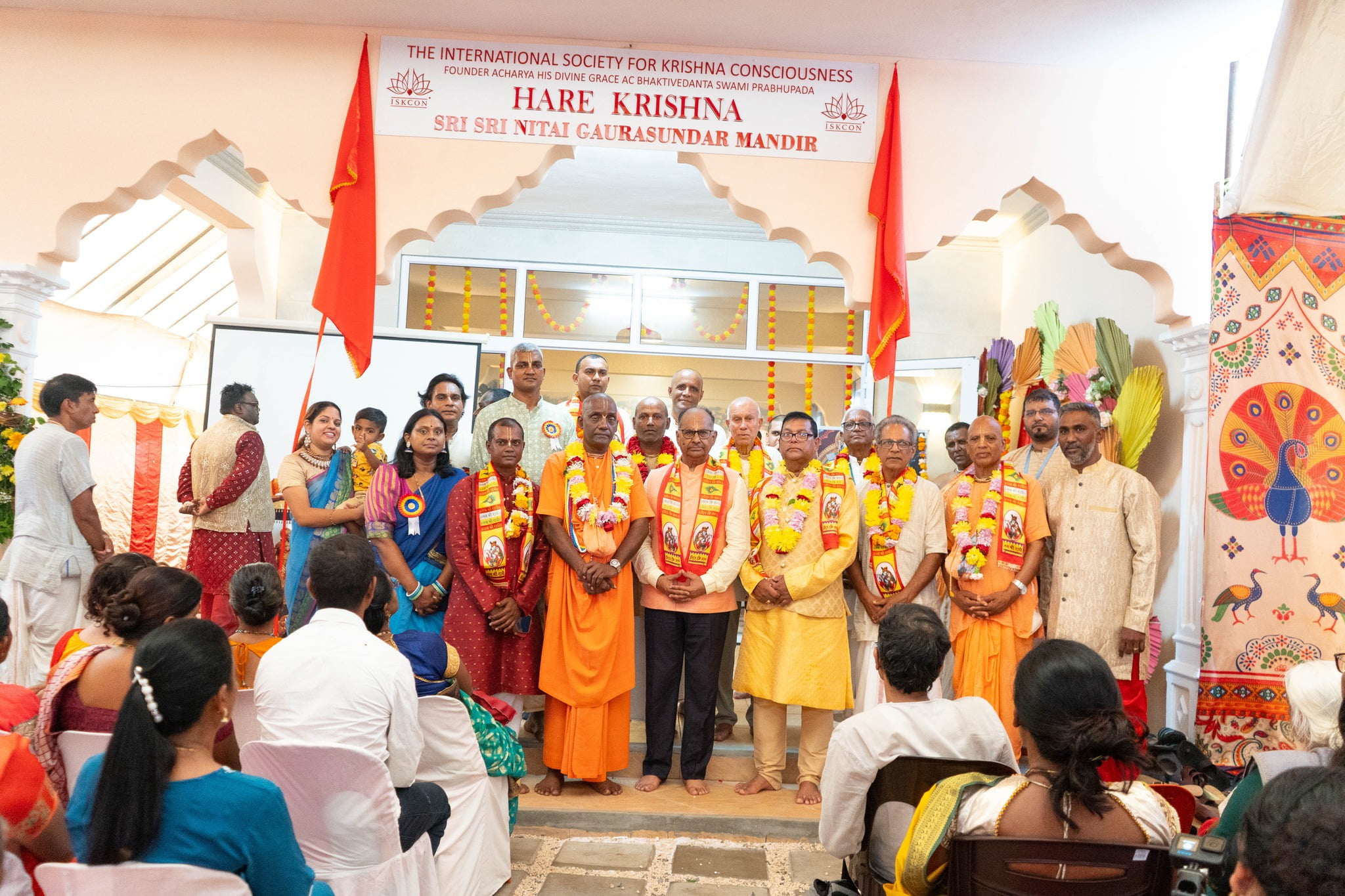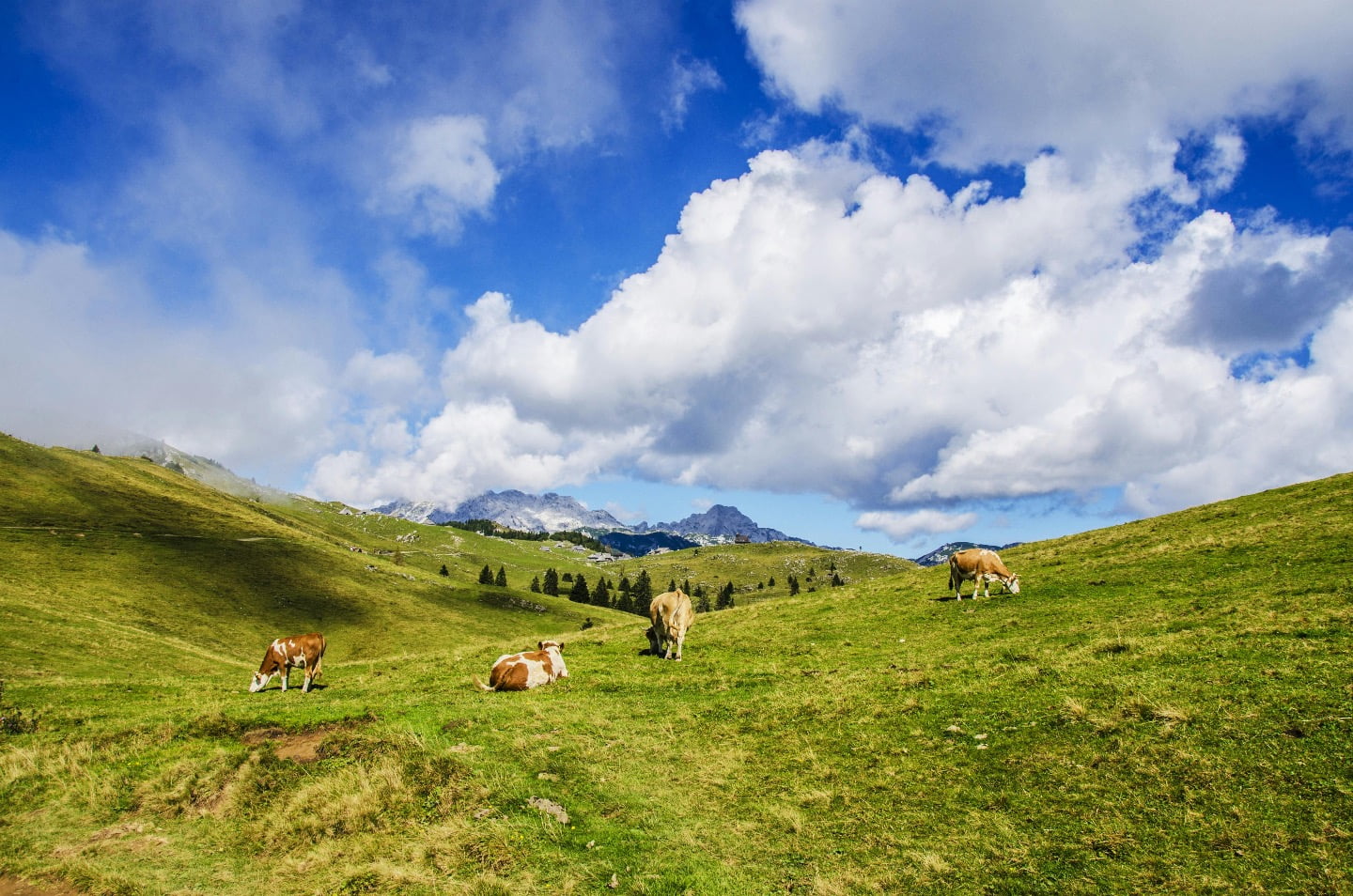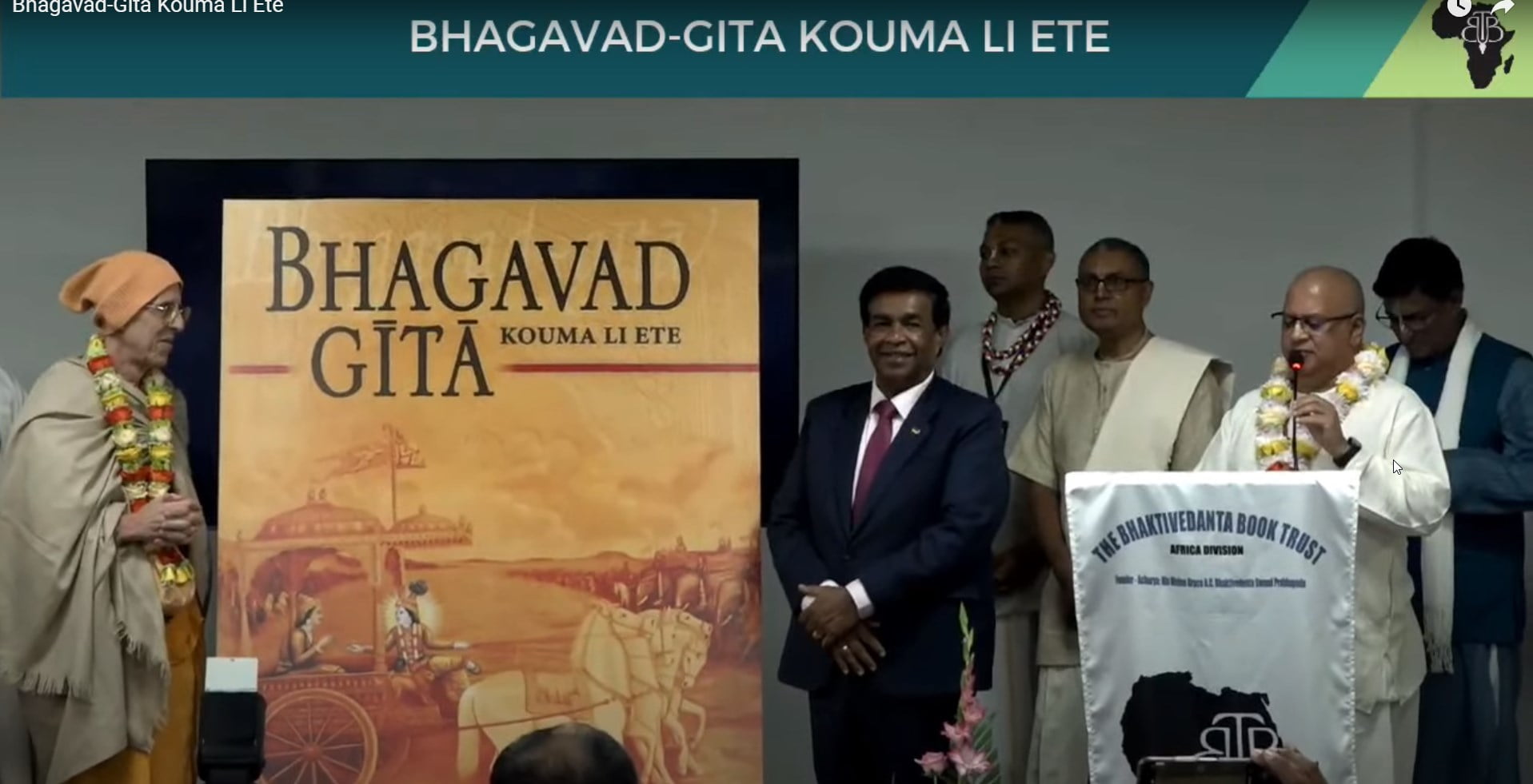Book Review – Babhru Dasa, Divine Intoxication: The Life and Love of Srila Akincana Krishna Dasa Babaji Maharaja
By Steven J. Rosen (Satyaraja Dasa) | Sep 27, 2019
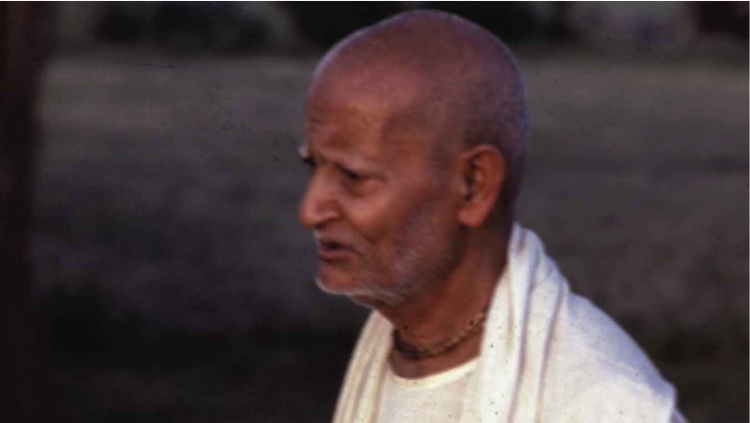
(Lightning Press, 2019, 258 pages, revised, photos)
A spiritual tradition is known by its luminaries. When one looks at a tradition in the abstract, much is missed, but if you look at the lives of people who live it on a daily basis, you see what the tradition is really all about. This is the premise of Babhru Dasa’s work. We follow him in his discovery of the Vaishnava stalwart, Akinchana Krishna Dasa Babaji Maharaja (early 20th century), whom he is introduced to through the auspices of Uttama-sloka Prabhu, a disciple of Srila A. C. Bhaktivedanta Swami Prabhupada (1896–1977). Once Babhru learns about this modern-day Babaji, we enter into his divine world, as retold through the author’s research and lens of love.
Srila Prabhupada said that Krishna Dasa Babaji Maharaja was akinchana (“free from all material attachments, desires, and possessions”) and a paramahamsa (“a swan-like pure devotee”). Indeed, it is said that Babaji Maharaja’s attention was focused squarely on chanting the Holy Name of Krishna and nothing more. This in itself gives us reason to explore this superlative devotee’s life. Babhruji does us a massive service by unlocking the door, by finding out as much as he could and sharing it with us in a readable, accessible manner.
Born in East Bengal toward the end of the 19th century, Krishna Dasa Babaji’s life of bhakti (devotion) started young, although it received a huge push forward when he joined the Gaudiya Math, taking initiation from Srila Bhaktisiddhanta Sarasvati Thakura (1874–1937), the guru of Srila Prabhupada. From that time forward, he fully immersed himself in the yuga-dharma or the spiritual practice most recommended for the current age: chanting Hare Krishna, Hare Krishna, Krishna Krishna, Hare Hare/ Hare Rama, Hare Rama, Rama Rama, Hare Hare.
Wandering the length and breadth of India, focusing particularly on the holiest of holy lands, Mayapur and Vrindavan, he eventually found himself, in 1959, leading kirtan (congregational chanting) at Srila Prabhupada’s sannyasa initiation in Mathura. It was then that he realized that Srila Prabhupada was no ordinary devotee — that he would be the one to take the nonsectarian and universal message of bhakti outside of India, incorporating, nurturing, and leading a worldwide Hare Krishna movement.
Krishna Dasa Babaji Maharaja and Srila Prabhupada had become close friends, with high mutual regard for each other. When one looks at Babaji’s life, it becomes clear why Prabhupada held him in such high esteem. For example, once, when Babaji Maharaja was leading a large chanting party through the streets of Vrindavan, a miraculous thing happened. Babhru (p. 93) shares the well known narrative:
This procession took place in the middle of the summer season, which means that the temperature would have been anywhere from 100-120 degrees Fahrenheit, as it is on a daily basis during the Vrindavan summer season. To make circumstances even more severe, the climate is also extremely dry in that area.
After some time of chanting with great energy, the devotees went near Srila Bhakti Saranga Goswami’s Gaudiya Matha. Just as they got near the temple, Babaji Maharaja suddenly collapsed. Of course, there may have very well been an internal reason for this, but at least to the external eye, it seemed likely that the extreme heat had caused his condition, not to mention the fact that he was an elderly man. To all the devotees looking on with concern, it seemed as if Babaji Maharaja was about to pass away.
Thinking like this, the devotees continued chanting (the maha-mantra always invokes auspiciousness) and carried Babaji Maharaja inside the temple. After some time, Babaji Maharaja came back to external consciousness but still felt extremely ill. Externally, he was barely coherent, but after a short while, he felt slightly better and asked the devotees to continue the chanting procession without him. Babaji Maharaja assured the hesitant devotees that he would catch up later.
The devotees could not possibly conceive of how the elderly babaji was really going to catch up to their party, especially given his current condition. Nonetheless, in order to please him, they all went back out into the streets to do more chanting. The devotees had been chanting for some time and most of them were feeling deep anxiety over Babaji Maharaja’s condition.
Astonishingly, on the last stretch of the procession, Babaji Maharaja came blissfully running with a mridanga in his hands and a big grin on his face. He again joined the [chanting] party, and all the devotees became completely overwhelmed with loving bliss and enthusiasm. When Babaji Maharaja appeared back on the scene he resembled a divine volcano erupting in ecstatic spiritual emotions. By his intense transcendental power, the other devotees were also similarly swept up into a devotional fervor, and they all continued with full abandon just like a pack of young and wild baby elephants.
By this pastime, Srila Babaji Maharaja clearly showed the world that transcendental power far exceeds any material limitation. Such was Babaji Maharaja’s extreme addiction to the chanting of the holy names. Nothing could stop him from chanting, not even a close call with death!
Such incidents were not uncommon in Babaji Maharaja’s manifested pastimes, and Babhru thankfully relates many of them with skill and passion. The author’s love for his subject is evident on every page. Make no mistake: the emotional content of this book rests on the fact that it’s a devotee writing about a devotee, engaging in a kirtan about a kirtan — and because of this internal, insider enthusiasm, the reader can effectively taste the rich elixir of Krishna Consciousness, usually known only to practitioners.
A similar story is on page 168:
One time while staying in Mayapur with Sripad Bhakti Charu Swami, Sriman Sarvabhavana Prabhu invited Krishna Dasa Babaji to stay in their room with them. Babaji Maharaja accepted the invitation happily and stayed with them for five nights. During these five nights, Sarvabhavana Prabhu’s life would change.
During these nights, when it was time to take rest, Bhakti Charu Swami and Sarvabhavana Prabhu would lie down and sleep, but Babaji Maharaja would sit up in a chair and just chant softly as he usually did. However, during the nights Sarvabhavana Prabhu was often awakened, which was rather abnormal for him, since he was normally a heavy sleeper. However, the reason he was awakened was not because Babaji Maharaja was chanting too loudly or moving about, but rather because the energy surrounding the divine Babaji would automatically dissolve the qualities of tamo-guna (mode of ignorance) such as the desire to sleep.
In this way Sarvabhavana Prabhu would wake up periodically throughout the night to witness Babaji Maharaja completely absorbed in his chanting. Babaji Maharaja would be sitting in the chair and slightly rocking his body back and forth. During these night time chanting sessions of Babaji Maharaja, Sarvabhavana Prabhu also saw that Babaji Maharaja was drooling quite a lot of saliva down his mouth, and onto his body and floor. According to ordinary estimation this may seem very strange, but actually “drooling” is one of the external symptoms of a person who has entered into an intense state of rapturous ecstasy called anubhava.
In the sacred texts, such symptoms are described thus: “Anubhavas refer to those things which express the bhava [spiritual ecstasy] in the heart. They are predominantly external transformations . . . such as drooling, laughing loudly, [etc.].” (Bhakti-rasamrita-sindhu 2.2.1-2)
Sarvabhavana Prabhu comments that to be around the divine saint when he was chanting like this was truly an ecstatic experience. Sometimes, Sarvabhavana Prabhu was concerned that Babaji Maharaja wouldn’t have enough energy for the next day due to lack of sleep, but this was not the case, ever. Actually Babaji Maharaja was always seen to have more energy and enthusiasm than anyone else, including those who were much younger than he. If Babaji Maharaja did sleep during these visits, it was only to a very slight degree. After the lunch time meal, he would sleep for about 30 minutes and then quickly get up and resume his activities of chanting and meditating on the Supreme Lord Krishna.
And so it was that Babaji Maharaja exhibited ecstatic symptoms of love for Krishna and a contagious form of Krishna Consciousness that affected everyone in proximity. Moreover, despite being an elder sadhu, he exhibited youthful enthusiasm that naturally comes from direct contact with spiritual energy, allowing him to overcome material limitations. He was alive with devotion, and that life comes through in Babhru’s book.
In November of 1977, just a few days before Srila Prabhupada himself would pass away from this world, Babaji Maharaja had come to visit him. The latter chanted with His Divine Grace, talked with him, and was often overtaken with laughter, even while everyone else in the room was somber and silent. After all, Prabhupada was in the final days of his life on earth. But because Babaji Maharaja saw with transcendental vision, he was not inclined to mourn — he knew that Prabhupada was always with Krishna in his heart of hearts, and this was so even if he was now preparing to leave his body. It was a time to rejoice, not a time for sadness.
In March of 1981, after a serious illness, Babaji Maharaja journeyed to Nandagram, Lord Krishna’s ancestral village, to spend his final days. In this centrally located area of Braja, there is a region called Pavana-sarovara, where Sanatana Goswami, senior-most among the Six Goswamis of Vrindavan, had performed devotional service. This is the place where Babaji Maharaja chose to spend his final days, meditating on Lord Krishna in perfect tranquility and absorbed in kirtan. On April 12, 1982, at about 8 p.m., Akinchana Krishna Dasa Babaji Maharaja passed away from this world.
Babhruji’s book conveys all these moods and truths surrounding this singularly great soul, and with the numerous pictures found throughout the volume, the presentation is complete: Readers will have intimate contact with a genuine saint.
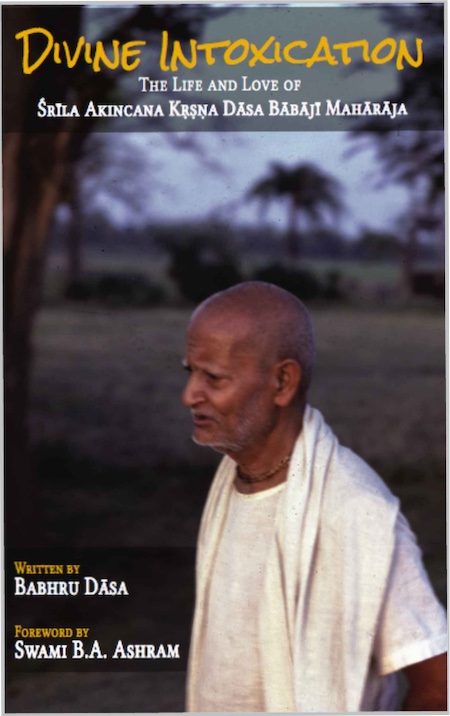
* * *
Steven J. Rosen (Satyaraja Dasa) is a biographer, scholar and author in the fields of philosophy, Indic religion, and comparative spirituality. He is the founding editor of the Journal of Vaishnava Studies; associate editor of Back to Godhead magazine; and a disciple of His Divine Grace A. C. Bhaktivedanta Swami Prabhupada. His thirty-plus books include Essential Hinduism (Rowman & Littlefield); Yoga of Kirtan: Conversations on the Sacred Art of Chanting (FOLK Books); Krishna’s Other Song: A New Look at the Uddhava Gita (Praeger-Greenwood); and Sri Chaitanya’s Life and Teachings: The Golden Avatara of Divine Love (Lexington Books).
Ordering info for Divine Intoxication: The Life and Love of Śrīla Akincana Kṛṣṇa Dāsa Bābājī Mahārāja:
Amazon Paperback ($16.50 USD): https://www.amazon.com/dp/B07XWP3PWF/ref=sr_1_5?keywords=Divine+Intoxication&qid=1568499436&sr=8-5
Amazon E-book ($8 USD): https://www.amazon.com/gp/product/B077NSXZ7Z?pf_rd_p=183f5289-9dc0-416f-942e-e8f213ef368b&pf_rd_r=RZ5TXVT769Y9R9XM4N6E
To Order Paperback Direct from Babhru Dasa via PayPal w/shipping included ($20.00 USD): bdasa108@gmail.com
For wholesale enquiry (5+ copies) please write Babhru Dasa at bdasa108@gmail.com








